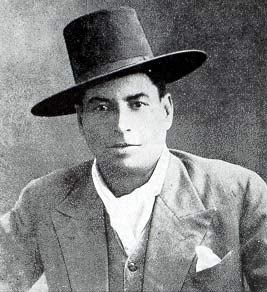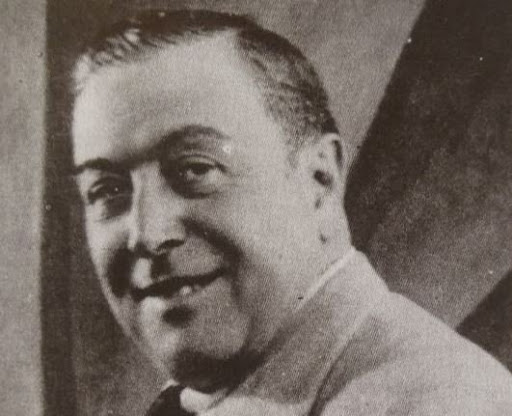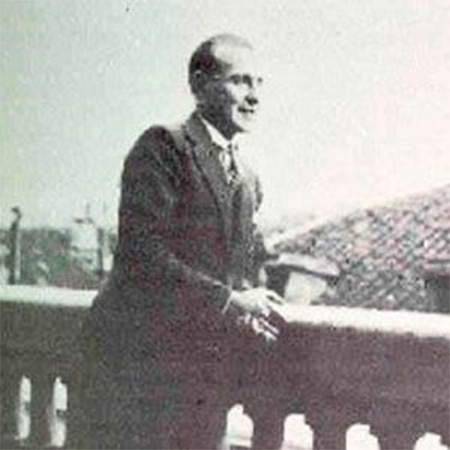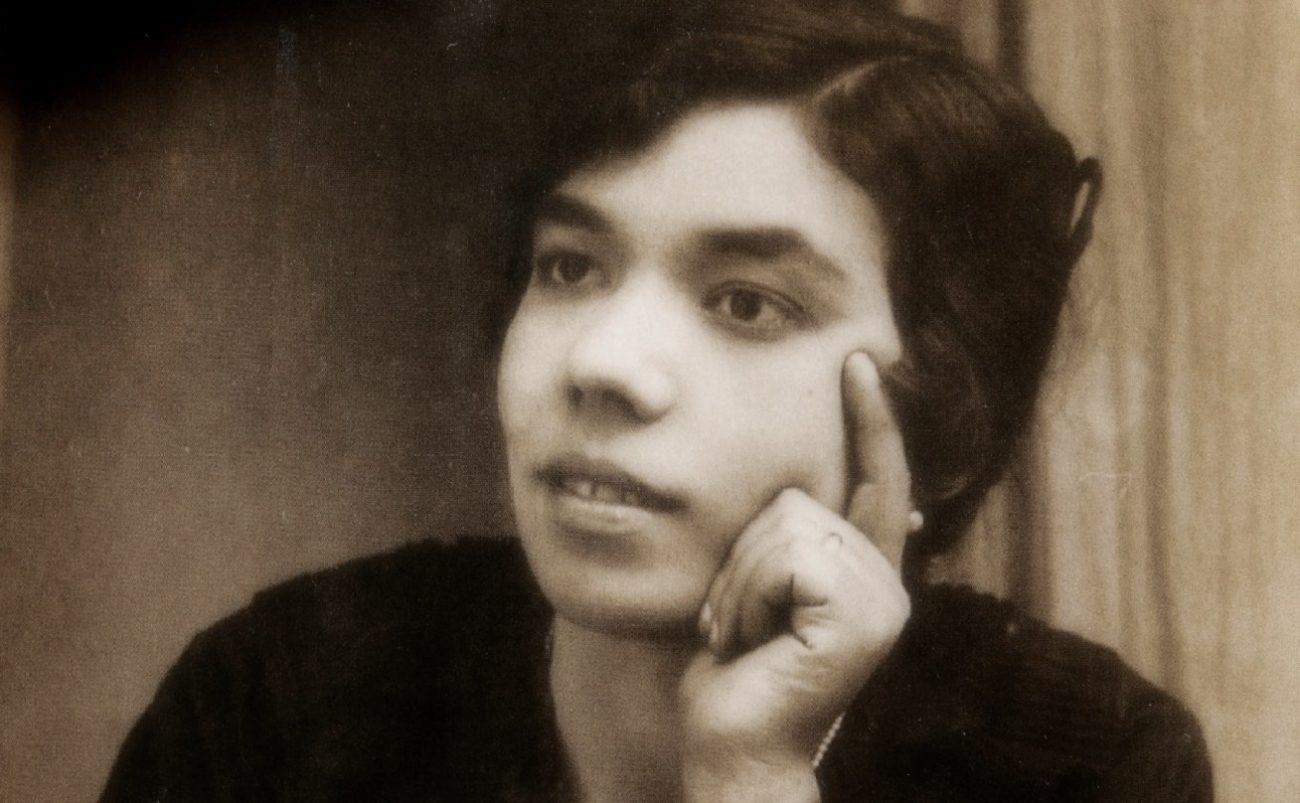Gypsy singer belonging to a saga, that of Los Torre (The Towers), headed by his father, so called because of his height. Manuel Torre, also known as Niño de Jerez (Boy from Jerez) and in some documents called Torres, is considered one of the most influential flamenco artists of all time, to the point that his artistic legacy is not interrupted with his death and continues during the postwar period in flamenco environments.
His childhood was spent in the streets of the San Miguel neighborhood in Jerez with no other training than that which he obtained from his gypsy and Andalusian environment and alternating agricultural work with that of a fishmonger. His career was limited to the three typical environments of flamenco singing: the parties of the Jerez aristocracy, the “cafés cantantes” (coffee shops whith live flamenco music) and family gatherings. He made his professional debut in 1902 in Seville, where he soon became the new star, representing a type of existential singing, between loneliness, sorrow and heartbreak, and a style that continued with Manolo Caracol, Antonio Mairena, Agujetas or, more recently, with José Mercé. Hence his favorite songs were seguiriyas and soleares, as well as cartageneras and the peteneras.
García Lorca dedicated to him the poems of the ‘Flamenco Vignettes’ included in the book ‘Poem of the Deep Song’, composed during the celebration of the 1922 Flamenco Song Contest, but published in 1931: “To Manuel Torres [sic], Niño de Jerez, who has Pharaoh’s torso”.
His peak, however, are the seguiriyas, songs with which he performed, accompanied by soleares, in the 1922 Flamenco Song Contest organized in the Plaza de los Aljibes in Granada by Manuel de Falla, García Lorca, Zuloaga and a large group of intellectuals of the time. On the occasion of the Granada contest he recorded for the first time the seguiriya (Siempre por los rincones and Quedito los golpes) at the express wish of Falla. He also met Rafael Alberti and Fernando Villalón, among other figures close to the Generation of ’27.
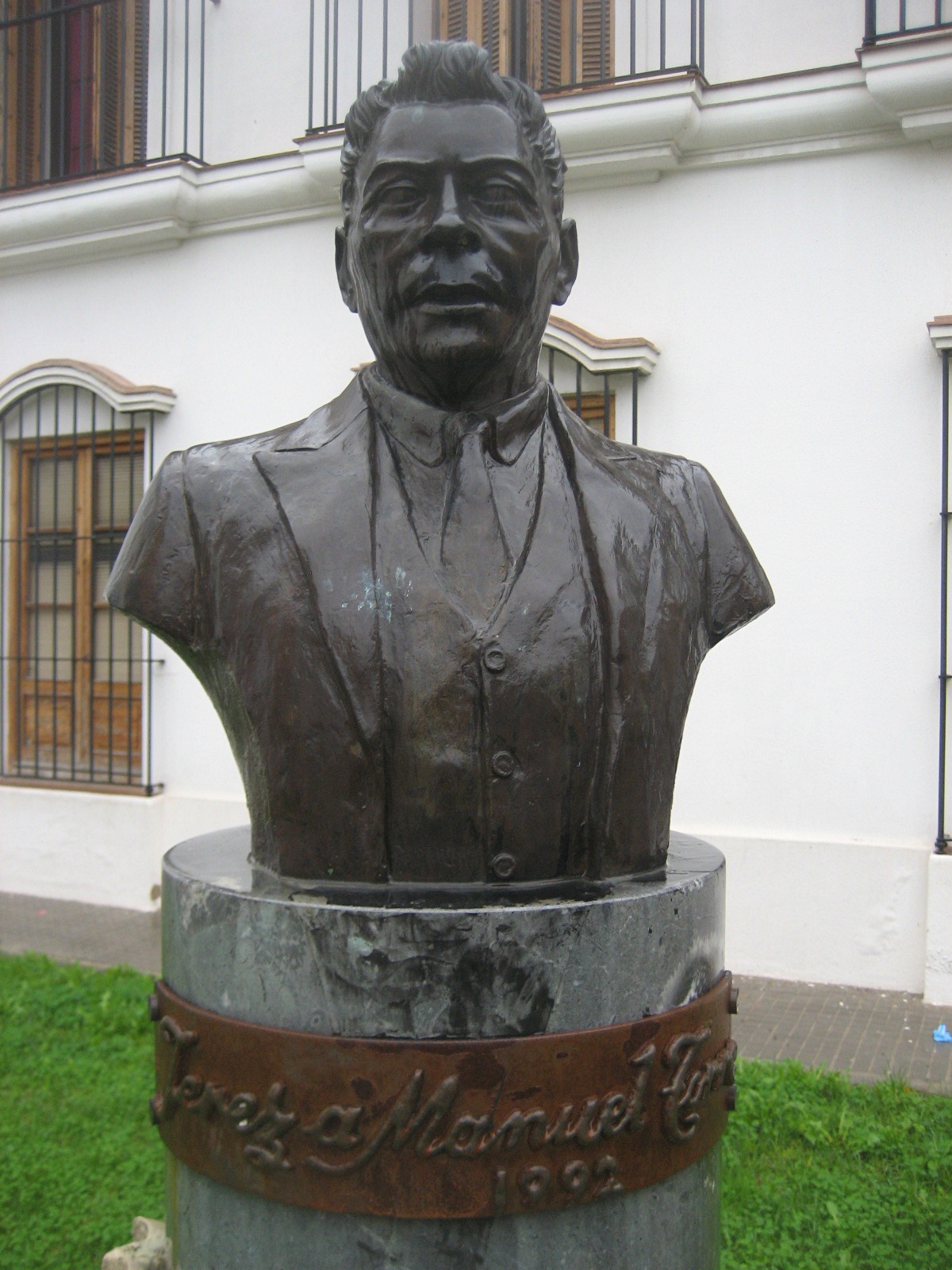
García Lorca dedicated to him the poems of the Flamenco Vignettes included in the book Poem of the Deep Song, composed during the celebration of the Deep Song Contest, but published in 1931: “To Manuel Torres [sic], Niño de Jerez, who has Pharaoh’ torso”. Isabel García Lorca recalls the summer evenings in the Huerta de san Vicente from 1926: “We had a gramophone and Federico played many records of classical music -especially Bach and Mozart-, and deep song. I still have the records of Manuel Torre, the Niña de los Peines and also the records of her brother Tomás Pavón”.
In 1933, during a conference lecture on deep song in Buenos Aires, shortly after Manuel Torre passed away, Federico made the following dedication to him, collected by Christopher Maurer: “Manuel: Here in beloved Argentina, I present your voice, collected in the dramatic black moon of this gramophone. I want you to listen to it in the immense silence that now surrounds you: listen to this tumult of dahlias and kisses that I place at your feet, as king of deep song”.
He died from tuberculosis in 1933 at his home in Seville.
